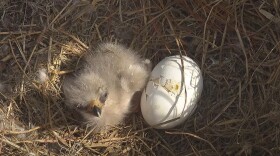The Florida Forest Service has lowered the risk of wildfires in Southwest Florida after several inches of rain fell in early May.
The rains were associated with late-season cold fronts, but they coincide with the time of year when dry and cool days begin to give way to hotter ones as the Sunshine State transitions to the typical summertime rainy season.
The KBDI Drought Index, a measure of the lack of moisture in the soil that the state forest service uses as an indicator the threat of wildfires, has fallen from the high 600s to the low 300s in Southwest Florida. The index ranges from 800, which indicates the forest is like a tinder box and ready to burn, to zero, which means the soil is saturated.
“We have dropped down to the 300s on the drought index,” said Patrick Mahoney, a forest service spokesman, “On the other hand, we are still asking people to be careful because we could climb right back up to the 600s in just a few weeks depending on the rainy season.”
Since the beginning of the year, Southwest Florida experienced a spate of wildfires, although none became large and no homes were destroyed in Charlotte, Lee or Collier counties.
So far this year, about 88,000 acres throughout Florida have been torched by roughly 1,500 wildfires.
Relief has been pouring from the skies during the first week in May. More than three inches fell in Charlotte, Lee, and DeSoto counties, more than two inches came down in Collier and Monroe counties, and over an inch fell in Sarasota, Hardee, Highlands and Glades counties, according to local and state rainfall records.

Despite the drop in the overall wildfire threat, pockets of forest remain dry, Mahoney said. An unattended campfire, illegal burning of yard waste, or a cigarette tossed from a car window could cause those areas to go up in flames in minutes.
Florida’s environment depends on wildfires to stay healthy. The flames burn off dead trees and vegetation, clearing the way for new growth that feeds wildlife. Some trees and bushes need wildfire to trigger the plants to drop their seeds. Wildfire also clears tree trunks of harmful vines and burns off old canopy, which allows more direct sunlight to reach the forest floor.
Usually, the wildfires do not kill the trees in the forests they move through. However, that has been changing as global warming is heating the planet, leading to more and drier dead vegetation, which in turn leads to hotter wildfires. The unnaturally intense wildfire have been killing trees that otherwise survived wildfires in previous decades.
A 3,500-year-old bald cypress tree in Big Tree Park in Longwood, outside Orlando, was killed by a forest fire in 2012. Climate change is suspected as one reason for the tree’s demise, but it cannot be proven.
Luckily for super-old tree lovers in Florida, a nearby bald cypress named Lady Liberty, that is more than 2,000 years old, survived the blaze. That means the cypress was but a sapling when B.C. became A.D. Lady Liberty is considered so important by arborists that they are trying to get permission to clone the tree to grow others like it.
Wildfires went largely unnoticed in Florida until people started living in homes that could not be easily moved. There is strong demand for homes built in woody surroundings, and not every buyer of properties like those thinks about the dangers of wildfire.
Wildland managers stress to clear a so-called "defensible space" around homes built into the woods. That is a 35-foot-wide buffer - or wider - around the home and the grass, trees, shrubs, and any wildland areas that surround it. The zone can stop a wildfire – or embers, or radiant heat – from catching a home on fire whether firefighters have made it there yet or not.

“Today we are still learning how to live safely in Florida's fire-prone environment,” a forest service statement says. “Our growing population continues to move from our towns and cities and build in areas that have historically been forest or wildland. This expansion into the wildland/urban interface has resulted in an increased number of homes threatened by wildfire.”
The Florida wildland agency says a defensible space should be maintained year-round because wildfires can occur in Southwest Florida in any given month. The agency’s guidelines can be found here.
Environmental reporting for WGCU is funded in part by VoLo Foundation, a non-profit with a mission to accelerate change and global impact by supporting science-based climate solutions, enhancing education, and improving health. Sign up for WGCU's monthly environmental newsletter, the Green Flash, today.








